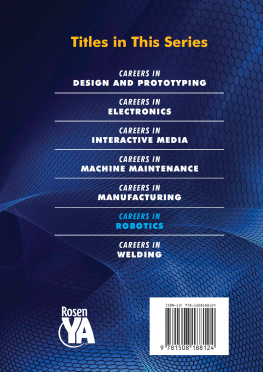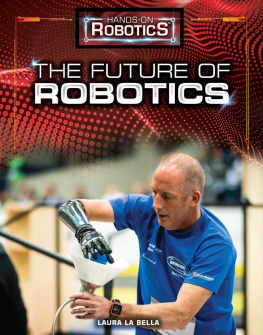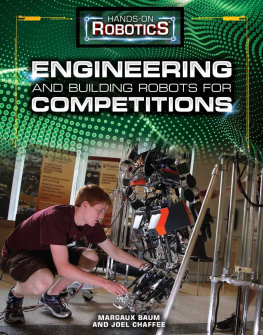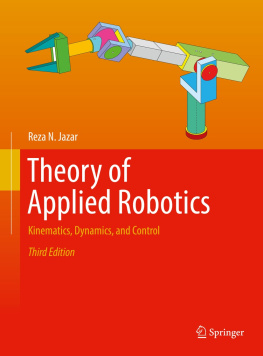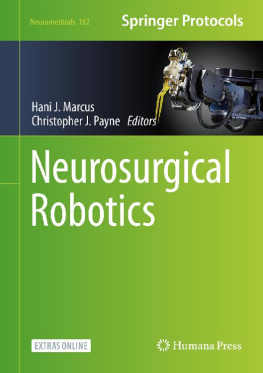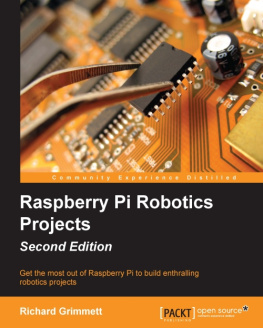TL - ROBOTICS ENGINEERING: Basic to Advanced Concepts of Robotics Engineering
Here you can read online TL - ROBOTICS ENGINEERING: Basic to Advanced Concepts of Robotics Engineering full text of the book (entire story) in english for free. Download pdf and epub, get meaning, cover and reviews about this ebook. year: 2021, genre: Home and family. Description of the work, (preface) as well as reviews are available. Best literature library LitArk.com created for fans of good reading and offers a wide selection of genres:
Romance novel
Science fiction
Adventure
Detective
Science
History
Home and family
Prose
Art
Politics
Computer
Non-fiction
Religion
Business
Children
Humor
Choose a favorite category and find really read worthwhile books. Enjoy immersion in the world of imagination, feel the emotions of the characters or learn something new for yourself, make an fascinating discovery.

- Book:ROBOTICS ENGINEERING: Basic to Advanced Concepts of Robotics Engineering
- Author:
- Genre:
- Year:2021
- Rating:4 / 5
- Favourites:Add to favourites
- Your mark:
- 80
- 1
- 2
- 3
- 4
- 5
ROBOTICS ENGINEERING: Basic to Advanced Concepts of Robotics Engineering: summary, description and annotation
We offer to read an annotation, description, summary or preface (depends on what the author of the book "ROBOTICS ENGINEERING: Basic to Advanced Concepts of Robotics Engineering" wrote himself). If you haven't found the necessary information about the book — write in the comments, we will try to find it.
TL: author's other books
Who wrote ROBOTICS ENGINEERING: Basic to Advanced Concepts of Robotics Engineering? Find out the surname, the name of the author of the book and a list of all author's works by series.
ROBOTICS ENGINEERING: Basic to Advanced Concepts of Robotics Engineering — read online for free the complete book (whole text) full work
Below is the text of the book, divided by pages. System saving the place of the last page read, allows you to conveniently read the book "ROBOTICS ENGINEERING: Basic to Advanced Concepts of Robotics Engineering" online for free, without having to search again every time where you left off. Put a bookmark, and you can go to the page where you finished reading at any time.
Font size:
Interval:
Bookmark:
ROBOTICS
ENGINEERING
Basic to Advanced Concepts of Robotics Engineering
Prabhu TL

Nestfame Creations Pvt. Ltd.
[ Robotics Engineering ]
Copyright [2021] Prabhu TL. All rights reserved.
Publisher - Nestfame Creations Pvt. Ltd.
Publisher Website - www.nestfamecreations.com
The contents of this book may not be reproduced, duplicated or transmitted without direct written permission from the Author .
Under no circumstances will any legal responsibility or blame be held against the publisher for any reparation, damages, or monetary loss due to the information herein, either directly or indirectly.
Author - Prabhu TL
Indexer - Akshai Kumar RY
Legal Notice:
This book is copyright protected. This is only for personal use. You cannot amend, distribute, sell, quote or paraphrase any part or the content within this book without the consent of the author.
Disclaimer Notice:
Please note the information contained within this document is for educational and entertainment purpose only .every attempt has been made to provide accurate, up to date and reliable complete information. No warranties of any kind are expressed or implied. Please consult a licensed professional before attempting any techniques outlined in this book .
By reading this document, the reader agrees that under no circumstances are is the author responsible for any losses, direct or indirect, which are incurred as a result of the use of information contained within this document, including, but not limited to, __e R rors, omissions, or inaccuracies.
Font size:
Interval:
Bookmark:
Similar books «ROBOTICS ENGINEERING: Basic to Advanced Concepts of Robotics Engineering»
Look at similar books to ROBOTICS ENGINEERING: Basic to Advanced Concepts of Robotics Engineering. We have selected literature similar in name and meaning in the hope of providing readers with more options to find new, interesting, not yet read works.
Discussion, reviews of the book ROBOTICS ENGINEERING: Basic to Advanced Concepts of Robotics Engineering and just readers' own opinions. Leave your comments, write what you think about the work, its meaning or the main characters. Specify what exactly you liked and what you didn't like, and why you think so.

